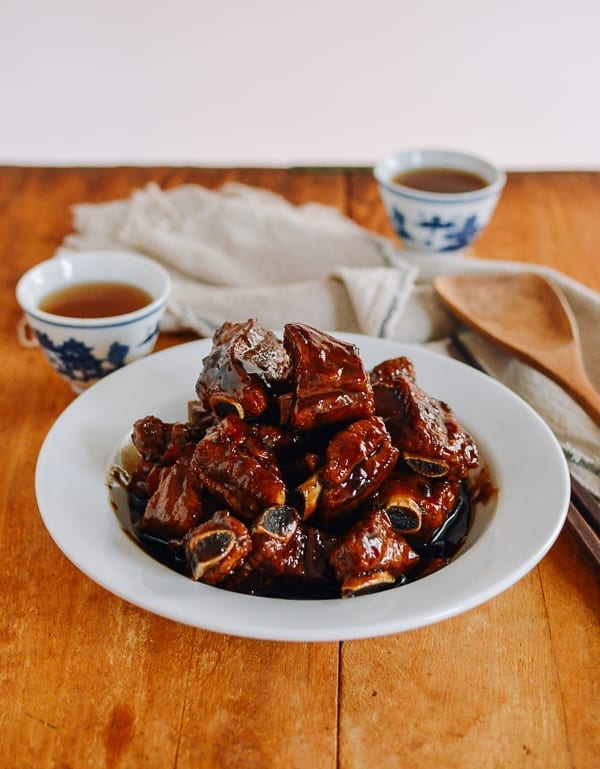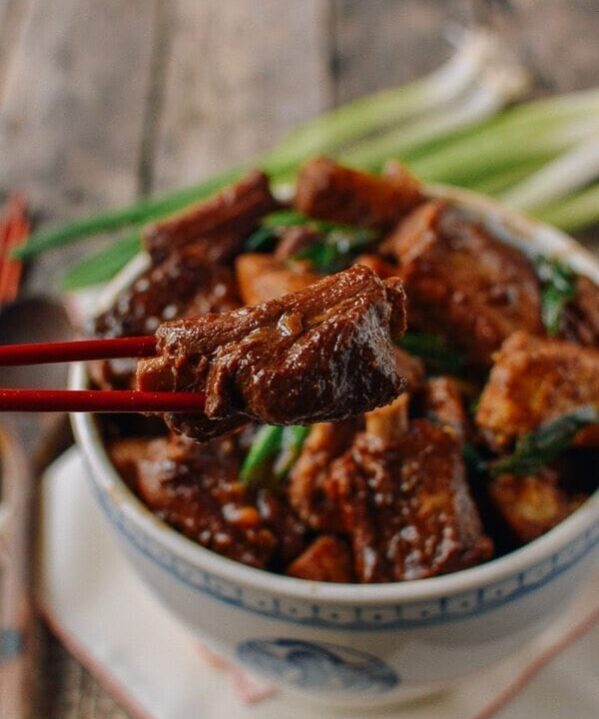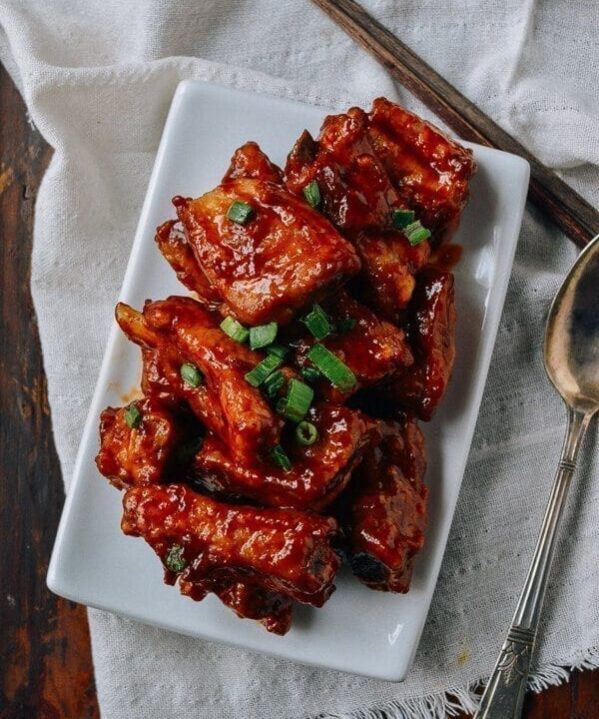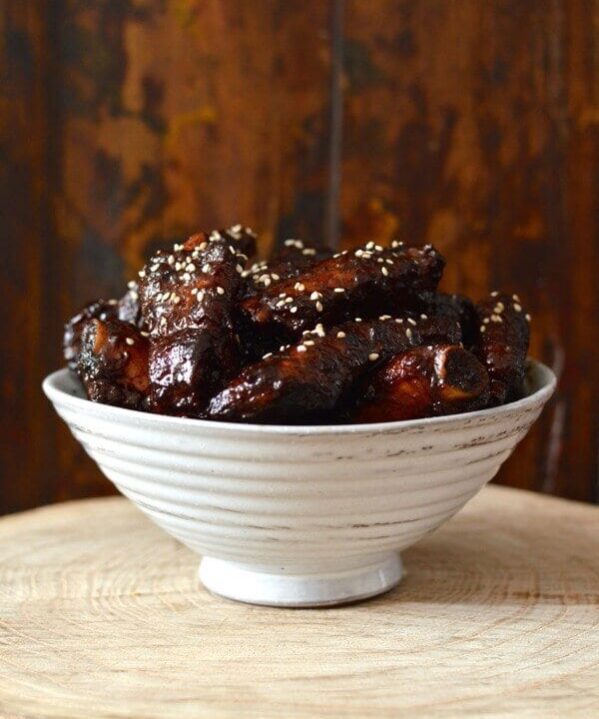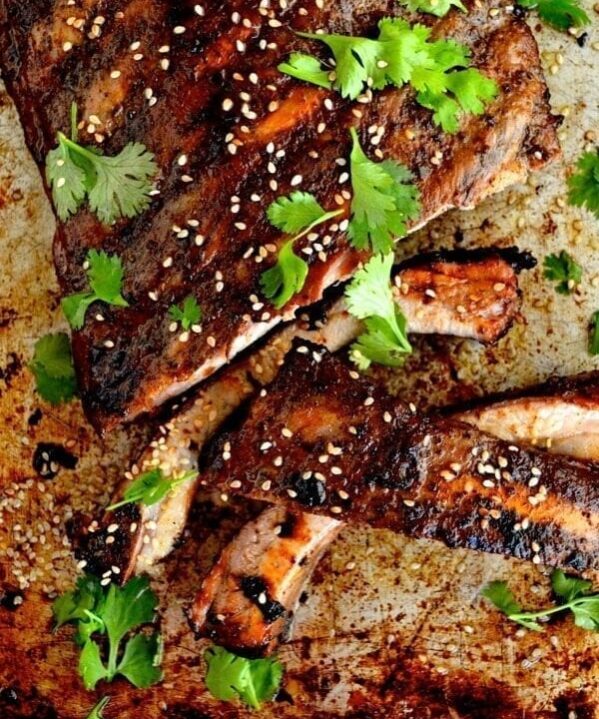1-2-3-4-5 Ribs is a dish that’s come in and out of my consciousness with an almost mystical quality. I didn’t know the origin of the name, nor had I ever tried it. But every so often, I’d hear of it again and wonder what everyone else seemed to know that I didn’t!
So when I heard recently from a cousin that it’s her go-to rib recipe and that her kids love it, I finally was able to demystify the dish that’s eluded me all these years.
So Why Is It Called 1-2-3-4-5 Ribs?
I don’t know who invented this wickedly tasty Chinese rib recipe, but when you see a name like 1-2-3-4-5 Ribs, you know it’s going to be easy.
Basically, the 1-2-3-4-5 refers to the ratios of 5 basic ingredients: Shaoxing wine, light soy sauce, black vinegar, sugar, and water. The result is a sticky sweet and sour sauce that perfectly coats the ribs.
Depending on whether you prefer your sweet and sour sauce to be primarily sweet or sour, you can feel free to switch around the sugar and vinegar ratios (use 4 tablespoons vinegar and 3 tablespoons sugar as opposed to the other way around).
Just one word of advice—restrain yourself from changing the recipe in any other way! Even I had to control myself, because I wanted so much to add some dark soy sauce to make the color a little darker. But I decided to have faith, and as you can see, the black vinegar helped do the job nicely! In this case, the basic simplicity of the dish really works.
I will say that 1-2-3-4-5 ribs do call for a fair amount of sugar, so make it as an occasional treat. That said, I’m very glad this recipe is no longer a mystery to me!
1-2-3-4-5 Ribs: Recipe Instructions
Select meaty ribs, and have the butcher cut them into 1.5” to 2” long pieces.
Or, if you have a heavy Chinese cleaver, here’s a quick video demonstrating how to chop the ribs. Don’t try this with a regular chef’s knife. They weren’t meant to chop through bone, and you will probably chip your knife.
As you can see, the cleaver I’m using is very heavy and thick. It was designed for chopping through bones like this.
Position a damp dish towel underneath the cutting board to create an anti-slip surface. It also serves as padding for your countertop, to help absorb the shock of the knife’s motion.
Rinse and pat dry with a paper towel.
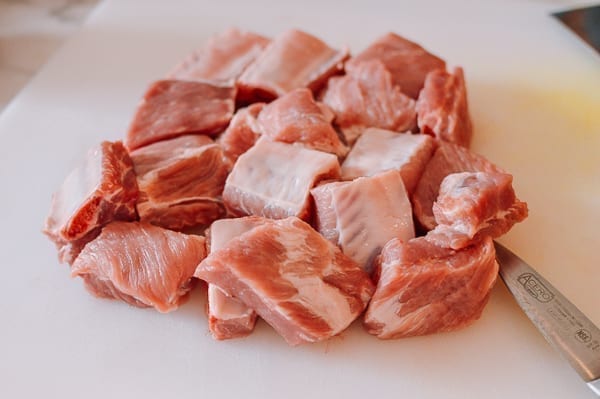
Preheat a wok until it starts to smoke lightly (see my post on how to prevent food from sticking to a wok). Add 2 tablespoons oil, along with the ginger slices. Over medium heat, fry the ginger for 1 minute.
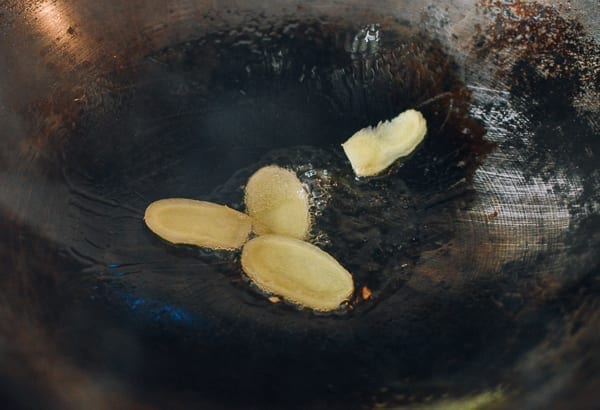
Add the ribs.
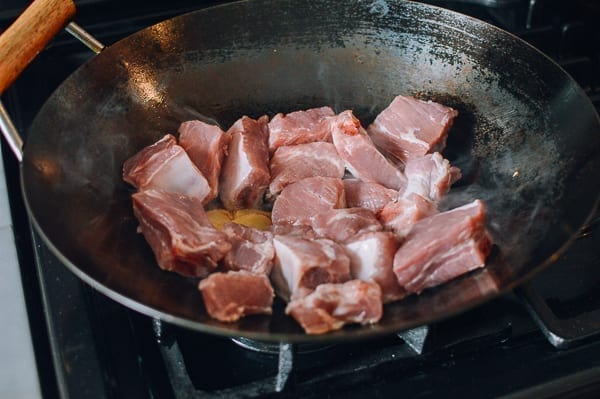
Turn up the heat to high, and take a few minutes to brown both sides.
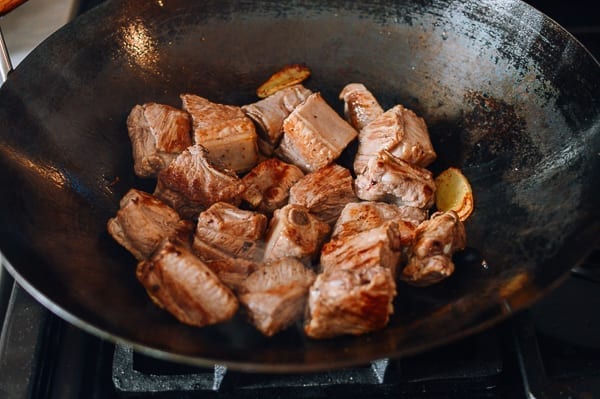
Turn down the heat, and add in:
1 tablespoon Shaoxing wine…
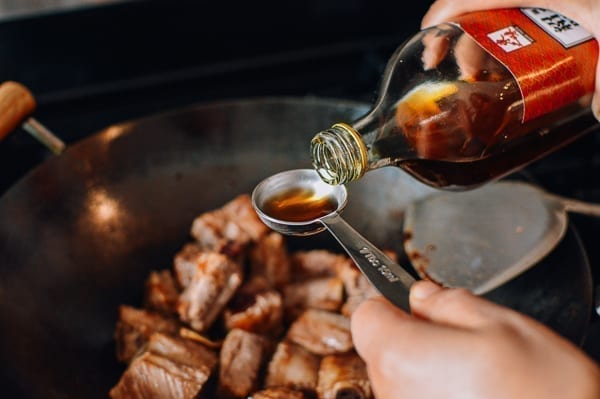
2 tablespoons light soy sauce…
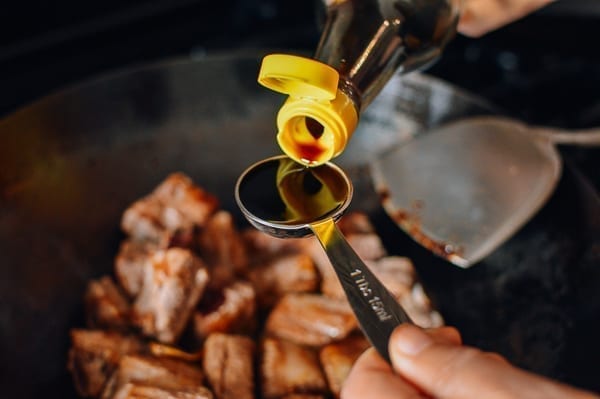
3 tablespoons Chinese black vinegar…
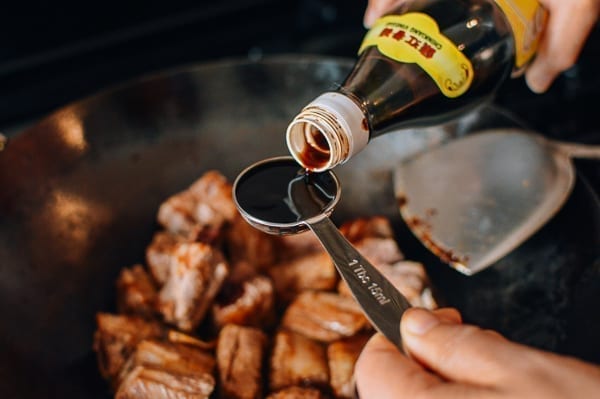
4 tablespoons sugar…
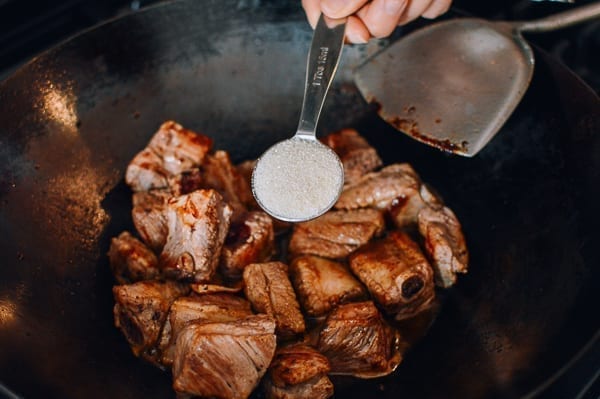
And 5 tablespoons water.
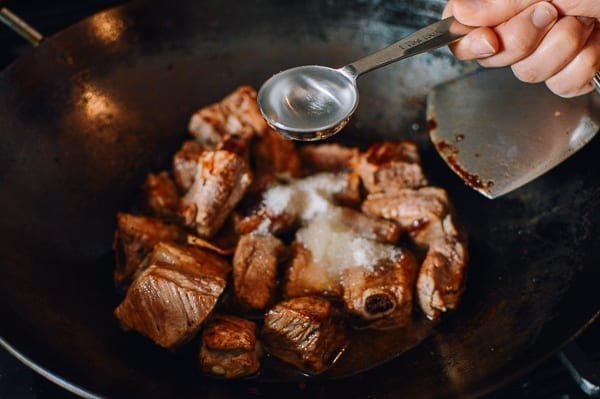
Stir and mix everything well. Turn up the heat to bring it to a boil.
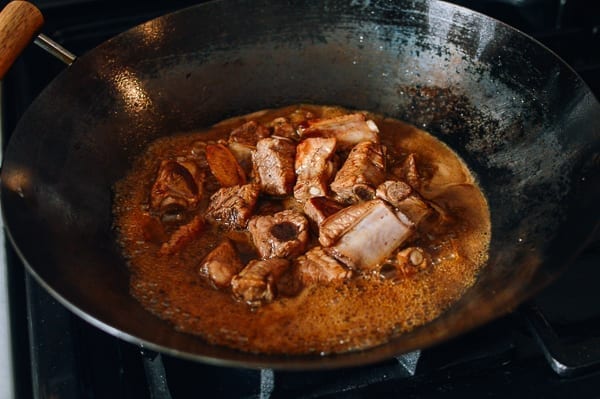
Once boiling, cover and reduce the heat to medium/low. Simmer for 25 minutes (20 minutes if the ribs are less meaty than mine). Halfway through the process, check to make sure the liquid is not drying up. If so, reduce the heat further and add in a little more water if needed.
After 25 minutes of simmering, remove the lid. There should be quite a bit of liquid left.
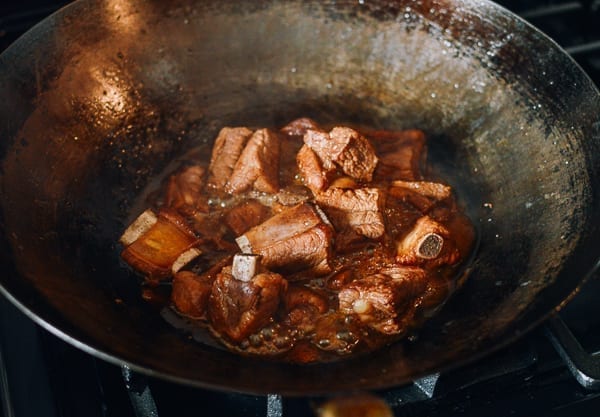
Time to turn up the heat to reduce the sauce and make the ribs glisten. With the heat on high, continuously stir and toss the ribs. This process takes only a couple of minutes.
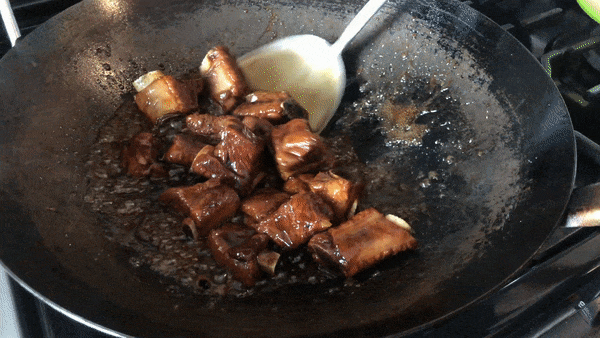
Reduce the liquid until there is ¼ cup of liquid left and the ribs are gleaming with sauce! Serve immediately.
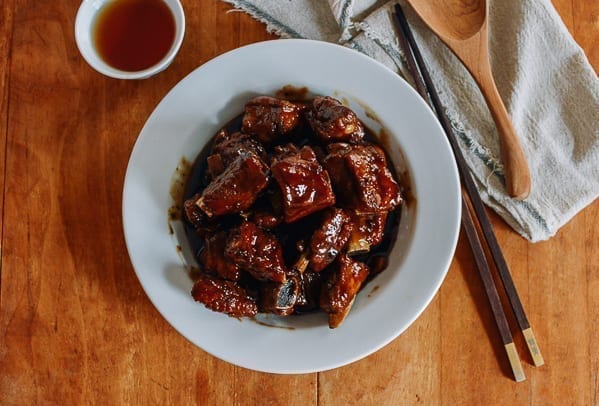
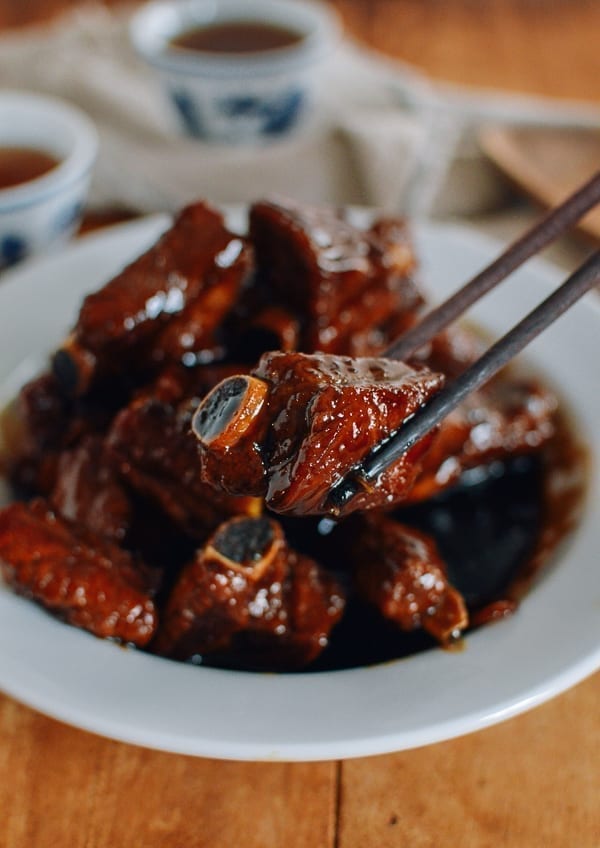
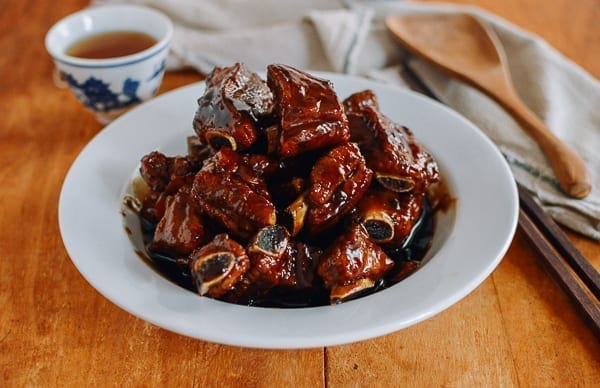
1-2-3-4-5 Ribs
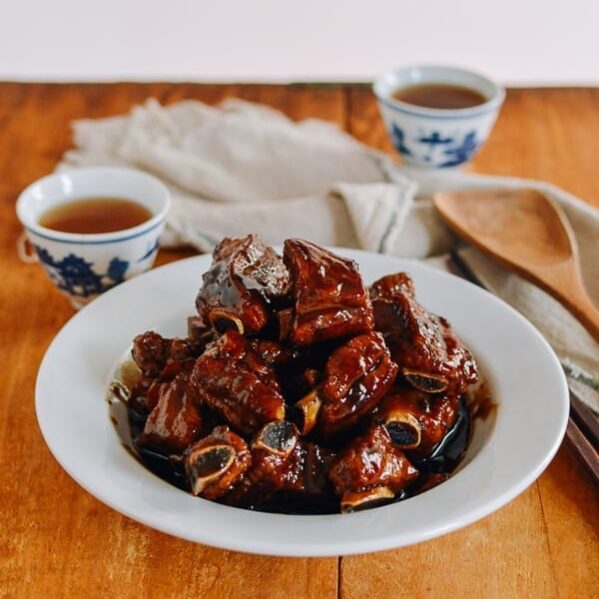
Ingredients
- 1 1/2 pounds pork ribs (680g, the meatier the better, cut into 1.5- to 2-inch pieces)
- 2 tablespoons oil
- 4 slices ginger
- 1 tablespoon Shaoxing wine
- 2 tablespoons light soy sauce
- 3 tablespoons Chinese black vinegar
- 4 tablespoons sugar
- 5 tablespoons water
Instructions
- Select meaty ribs, and have the butcher cut them into 1.5” to 2” long pieces. Rinse, and pat dry with a paper towel.
- Preheat a wok until it starts to smoke lightly (see my post on how to prevent food from sticking to a wok). Add 2 tablespoons oil, along with the ginger slices. Over medium heat, fry the ginger for 1 minute. Add the ribs, turn up the heat to high, and take a few minutes to brown both sides.
- Turn down the heat, and add in 1 tablespoon Shaoxing wine, 2 tablespoons light soy sauce, 3 tablespoons Chinese black vinegar, 4 tablespoons sugar, and 5 tablespoons water. Stir and mix everything well. Turn up the heat to bring it to a boil.
- Once boiling, cover and reduce the heat to medium/low. Simmer for 25 minutes (20 minutes if the ribs are less meaty than mine). Halfway through the process, check to make sure the liquid is not drying up. If so, reduce the heat further and add in a little more water if needed.
- After 25 minutes of simmering, remove the lid. There should be quite a bit of liquid left. Time to turn up the heat to reduce the sauce and make the ribs glisten. With the heat on high, continuously stir and toss the ribs. This process takes only a couple of minutes. Reduce the liquid until there is ¼ cup of liquid left and the ribs are gleaming with sauce! Serve immediately.
